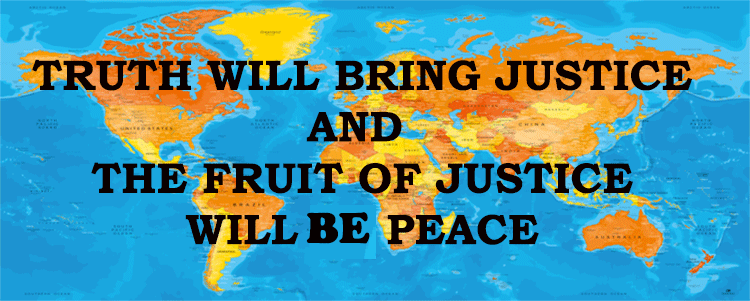 |
X
.
CAPE BOJADOR AND
THE AZORES. 1428-1441.
But in spite of Zarco’s success, Cape Bojador had
not yet been passed, though every year, from 1418, caravels had left Sagres, to find the coasts of Guinea.
In 1428, Don Pedro,
Henry’s elder brother, had come home from his travels, with all the books and
charts he had collected to help the explorers—and it is practically certain
that the Mappa Mundi given him in Venice acted as a
direct suggestion to the next attempts on west and south—westward to the
Azores, southward towards Guinea.
Kept in the royal
monastery of Alçobaça till late in the sixteenth
century, though now irrecoverably lost, this treasure of Don Pedro’s, like his manuscripts
of travel, would seem to have been used at the Sagres school till Prince Henry's death, and at least as early as 1431 its effect was
seen in the first Portuguese recovery of the Azores. All the West African
islands, plainly enough described in the map of 1428, were half within, half
without the knowledge of Christendom, ever and anon being brought back or
rediscovered by some accident or enterprise, and then being lost to sight and
memory through the want of systematic exploration. This was exactly what the
Portuguese supplied. The Azores, marked on the Laurentian Portulano of 1351, were practically unknown to seamen when, after eighty years had
passed, Gonzalo Cabral was sent out from Sagres to
find them (1431). He reached the Formiga group—the
Ant islands,—and next year (1432) returned to make further discoveries, chiefly
of the island Santa Maria. But the more important advances on this side were
made between 1444-50, after the first colony had been planted twelve or
fourteen years, and were the result of the Prince's theoretical correction of
his captains' practical oversight. From a comparison of old maps and
descriptions with their accounts, he was able to correct their line of sail and
so to direct them to the very islands they had searched for in vain.
But as yet these
results were far distant, and the slow and sure progress of African coasting
towards Cape Bojador was the chief outcome of Pedro's
help. In 1430, 1431, and 1432, the Infant urged upon his captains the paramount
importance of rounding the Cape, which had baffled all his caravels by its
strong ocean currents and dangerous rocks. At last this became the Prince's one
command: Pass the Cape if you do nothing beyond; yet the years went by, King
John of good memory died in 1433, and Gil Eannes,
sent out in the same year with strong hopes of success, turned aside at the
Canaries and only brought a few slaves back to Portugal. A large party at
Court, in the Army, and among the nobles and merchant classes, complained
bitterly of the utter want of profit from Henry's schemes, and there was at
this time a danger of the collapse of his movement. For though as yet he paid
his own expenses, his treasury could not long have stood the drain without any
incoming.
Bojador, the “paunch” or “bulging Cape”, 180 miles beyond Cape Non, had been, since
the days of the Laurentian Portulano (1351), and the
Catalan and Portuguese voyages of 1341 and 1346, the southmost point of
Christian knowledge. A long circuit was needed here, as at the Cape of Good
Hope, to round a promontory that stretched, men said, fully one hundred miles
into the ocean, where tides and shoals formed a current twenty miles across. It
was the sight or the fancy of this furious surge
which frightened Henry's crews, for it plainly forbade all coasting and
compelled the seamen to strike into the open sea out of sight of land. And
though the discovery of Porto Santo had proved the feasibility and the gain of
venturing boldly into the Sea of Darkness, and though since that time (1418)
the Prince had sent out his captains due west to the Azores and south-west to
Madeira, both hundreds of miles from the continent, yet in rounding Bojador there were not only the real terrors of the
Atlantic, but the legends of the tropics to frighten back the boldest.
Most mariners had
heard it said that any Christian who passed Bojador would infallibly be changed into a black, and would carry to his end this mark
of God's vengeance on his insolent prying. The Arab tradition of the Green Sea
of Night had too strongly taken hold of Christian thought to be easily shaken
off. And it was beyond the Cape which bounded their knowledge that the Saracen
geographers had fringed the coast of Africa with sea-monsters and serpent rocks
and water unicorns, instead of place names, and had drawn the horrible giant
hand of Satan raised above the waves to seize the first of his human prey that
would venture into his den. If God made the firm earth, the Devil made the
unknown and treacherous ocean—this was the real lesson of most of the medieval
maps, and it was this ingrained superstition that Henry found his worst enemy,
appearing as it did sometimes even in his most trusted and daring captains.
And then again,
the legends of Tropical Africa, of the mainland beyond Bojador,
were hardly less terrible than those of the Tropical Ocean. The Dark Continent,
with its surrounding Sea of Darkness, was the home of mystery and legend. We
have seen how ready the Arabs were to write Uninhabitable over any unknown
country—dark seas and lands were simply those that were dark to them, like the Dark
Ages to others, but nowhere did their imagination revel in genies and fairies
and magicians and all the horrors of hell, with more enthusiastic and genial
interest than in Africa. Here only the northern parts could be lived in by man.
In the south and central deserts, as we have heard from the Moslem doctors
themselves, the sun poured down sheets of liquid flame upon the ground and kept
the sea and the rivers boiling day and night with the fiery heat. So any
sailors would of course be boiled alive as soon as they got near to the Torrid
Zone.
It was this kind
of learning, discredited but not forgotten, that was still in the minds of Gil Eannes and his friends when they came home in 1433, with
lame excuses, to Henry's Court. The currents and south winds had stopped them,
they said. It was impossible to get round Bojador.
The Prince was
roused. He ordered the same captain to return next year and try the Cape again.
His men ought to have learned something better than the childish fables of past
time. “And if”, said he, “there were even any truth in these stories that they
tell, I would not blame you, but you come to me with the tales of four seamen
who perhaps know the voyage to the Low Countries or some other coasting route,
but, except for this, don't know how to use needle or sailing chart. Go out
again and heed them not, for by God's help, fame and profit must come from your
voyage, if you will but persevere”.
The Prince was
backed by the warm encouragement of the new King, Edward, his eldest brother,
who had only been one month upon the throne when he bestirred himself to show
his favour to a national movement of discovery. King
John had died on August 14, 1433 (the anniversary of Aljubarrota),
and on September 26th, of the same year, by a charter given from Cintra, King
Edward granted the islands of Madeira and Porto Santo, with the Desertas, to Henry as Grand Master of the Order of Christ.
With this
encouragement the Infant sent out Gil Eannes in 1434
under the strongest charge not to return without a good account of the Cape and
the seas beyond. Running far out into the open, his caravel doubled Bojador, and coming back to the coast found the sea “as
easy to sail in as the waters at home”, and the land very rich and pleasant.
They landed and discovered no trace of men or houses, but gathered plants, “such
as were called in Portugal St. Mary's roses”, to present to Don Henry. Not even
the southern Cape of Tempests or Good Hope was so long and obstinate a barrier
as Bojador had been, and the passing of this difficulty
proved the salvation of the Prince’s schemes. Though again and again
interrupted by political troubles between 1437 and 1449, the advance at sea
went on, and never again was there a serious danger of the failure of the whole
movement through general opposition and discontent.
In 1435 Gil Eannes was sent out again to follow up his success with Affonso Baldaya, the Princ’'s cupbearer, in a larger vessel than had yet been
risked in exploration, called a varinel, or oared
galley. The two captains passed fifty leagues—one hundred and fifty
miles—beyond the Cape, and found traces of caravans, reached as far as an inlet
they named Gurnet Bay, from its shoals of fish, and
again put back to Lagos, early in the year.
There were still
several months left for ocean sailing in 1435, and Henry at once despatched Baldaya again in his varinel, with orders to go as far as he could along the
coast, at least till he could find some natives. One of these he was to bring
home with him. Baldaya accordingly sailed 130 leagues—390
miles—beyond Cape Bojador, till he reached an estuary
running some twenty miles up the country and promising to lead to a great
river. This might prove to be the western Nile of the Negroes, or the famous
River of Gold, Baldaya thought, and though it proved
to be only an inlet of the sea, the name of Rio d'Ouro,
then given by the first hopes of the Portuguese, has outlasted the
disappointment that found only a sandy reach instead of a waterway to the
Mountains of the Moon and the kingdom of Prester John.
Baldaya anchored here, landed a couple of horses which the Infant had given him to
scour the country, and set “two young noble gentlemen” upon them to ride up
country, to look for signs of natives, and if possible to bring back one
captive to the ship. Taking no body-armour, but only
lance and sword, the boys followed the “river” to its source, seven leagues up
the country, and here came suddenly upon nineteen savages, armed with assegais.
They rode up to them and drove them out of the open up to a loose mound of
stones; then as evening was coming on and they could not secure a prisoner,
they rode back to the sea and reached the ship about the dawn of day. “And of
these boys”, says the chronicler, “I myself knew one, when he was a noble
gentleman of good renown in arms. His name was Hector Homen,
and you will find him in our history well proved in brave deeds. The other,
named Lopez d'Almeida, was a nobleman of good
presence, as I have heard from those who knew him”.
This first landing
of Europeans on the coasts of unknown Africa, since the days of Carthaginian
colonies, is one of the great moments in the story of Western expansion and
discovery. For it means that Christendom on her Western side has at last got
beyond the first circle of her enemies, the belt of settled Moslem ground, and
has begun to touch the wider world outside, on the shore of the ocean as well
as along the Eastern trade routes. And it almost seemed to be of little
practical value that Marco Polo and the friars and traders who followed him had
passed Islam in Asia, and reached even furthest Tartary, for it only made more
clear that Asia was not Christian, and that there would have to be a deadly
struggle before European influence could be restored on this side to what it
had been under Alexander; but on the west, by the Atlantic coasts, once Morocco
had been passed, there were only scattered savage tribes to be dealt with. Baldaya had now reached the pagans beyond Islam; the rival civilisation of the Arabs and their converts had been almost
outflanked by Don Henry's ships; and the boys who rode up the Rio d'Ouro beach in 1435 were the first pickets of a great
army. Their charge upon a body of grown men ten times their number, was a
prophecy of the coming conquests of Christian Europe in the new worlds it was
now in search of, in south and east and west.
Now Baldaya instantly followed up his pioneers. He took a party
in his ship's boat and rode up the stream to the scene of the fight, with the
boys on horseback riding by the bank and shewing him the stone-heap where the
natives had rallied on the day before. But in the night they had all fled
farther up country, leaving most of their miserable goods behind. All these
were carried off, and the Portuguese left the Bay of the Horses, as they called
this farthest reach of the Rio d'Ouro, and pulled
back to the varinel, without any further success than
a wholesome disappointment. They must go farther southward if they were to find
the western Nile and the way round Africa.
Still Baldaya was not content. He wished to carry back a
prisoner, as Henry had charged him, and so he coasted along fifty leagues more,
from the Rio d'Ouro to the Port of Gallee, a rock that looked like a galley, where there was a
more prominent headland than he had passed since Bojador.
Here he landed once again, and found some native nets, made of the bark of
trees, but none of the natives who made them.
In the early
months of 1436 he and his varinel were again in
Portuguese waters; but the land had now been touched that lay three hundred
miles beyond the old African Finisterre, and in two years (1434-6) Portugal and
all the Christian nations, through Henry's work, had entered on a new chapter
of history. The narrower world of the Roman Empire and the Medieval Church was
already growing into the modern globe in the break up of that old terror of the sea which had so long fixed for men the bounds that
they must not pass. The land routes had been cleared to Western knowledge,
though not mastered, by the Crusades; now the far more dreaded and unknown
water-way was fairly entered. For up to this time there is no fair evidence
that either Christian or Moorish enterprise had ever rounded Bojador, and the theoretical marking of it upon maps was a
very different thing from the experience that it was just like any other cape,
and no more an end of the world than Cape St. Vincent itself. Neither Genoese,
nor Catalans, nor Normans of Dieppe, nor the Arab wanderers of Edrisi and Ibn Said were before Don Henry now. His discoveries
of the Atlantic islands were findings, rediscoveries; his coast voyages from
the year 1433 are all ventures in the true unknown.
But from 1436 to
1441, from Baldaya’s second return to the start of
Nuno Tristam and Antam Gonsalvez for Cape Blanco, exploration was not successful
or energetic. The simple cause of this was the Infant's other business. In
these years took place the fatal attempt on Tangier, the death of King Edward,
and the troubles of the minority of his child, Affonso V—Affonso the African conqueror of later years.
True it is, we
read in our Chronicle of the Discovery of Guinea, that in these
years there went to those parts two ships, one at a time, but the first turned
back in the face of bad weather, and the other only went to the Rio d'Ouro for the skins and oil of sea wolves, and after
taking in a cargo of these, went back to Portugal. And true it is, too, that in
the year 1440 there were armed and sent out two caravels to go to that same
land, but in that they met with contrary fortune, we do not tell any more of
their voyage.
|
 |








